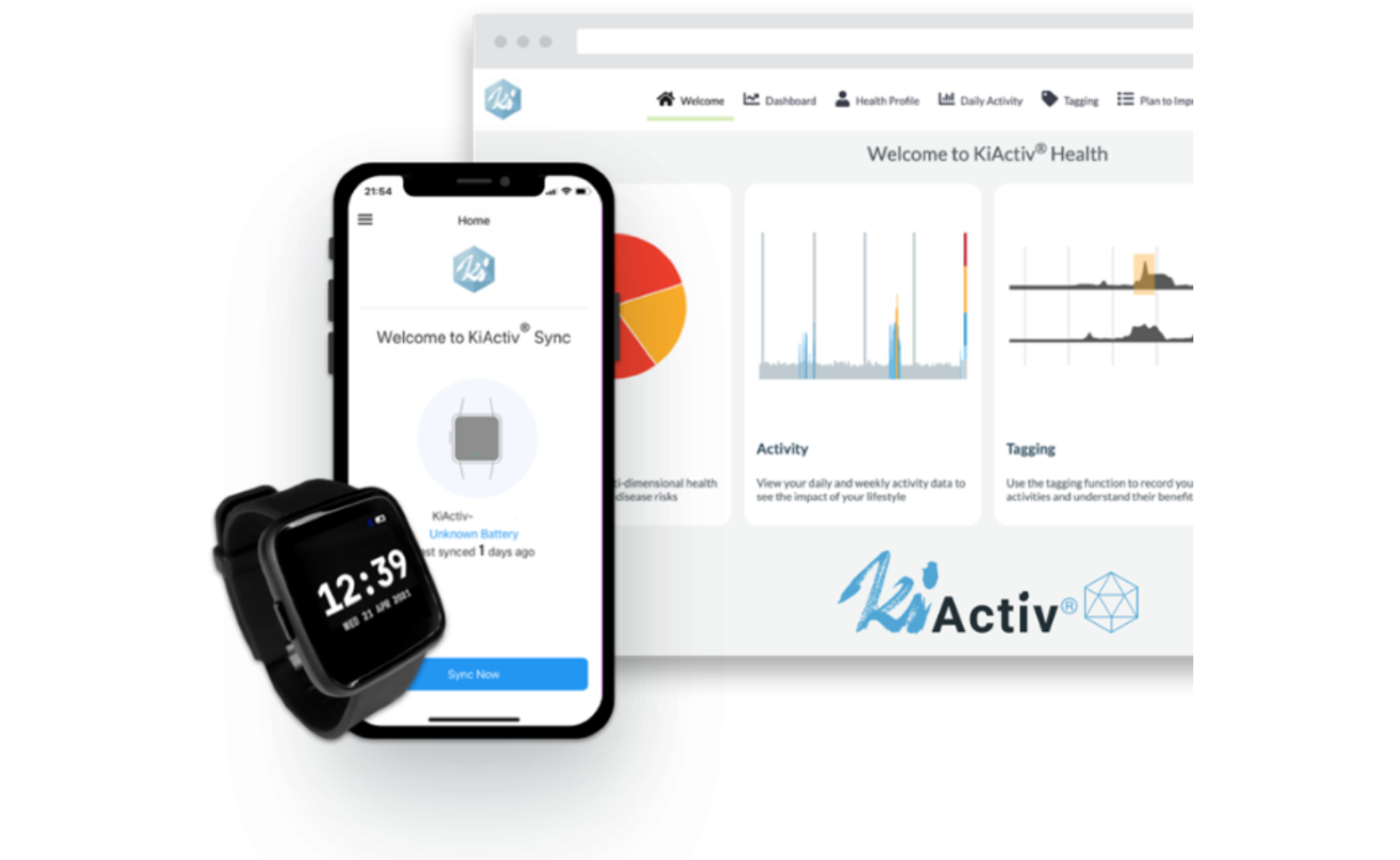Detecting Familial Hypercholesterolaemia
Over 90% of the world’s oceans remain unexplored. But before grabbing scuba gear, consider that in the UK, the same percentage of people with Familial Hypercholesterolaemia (FH) – a genetic condition that makes cardiovascular disease nine times more likely (1) – remains undetected (2). Affecting 1 in 250 people (approx. 240,000 in the UK (3)), improving FH detection represents an important opportunity to help prevent cardiovascular disease (CVD).
Finding the missing 200,000+ people living with FH might once have seemed as improbable as mapping the ocean floor. It is difficult to distinguish the genetic condition FH from other causes of high cholesterol, such as lifestyle factors (4). However, the capability to utilise secure data from NHS electronic patient records and apply bespoke algorithms to it safely has developed significantly. What is now possible at NHS clinician’s fingertips is cost-effective risk stratification that flags cohorts of people at high risk of FH.
Genetic testing for FH is now routinely available in the NHS. Guided by cholesterol measurements obtained in primary care, genetic testing can be offered to patients – and relatives – at highest risk of developing heart disease. This can lead to earlier, more accurate diagnosis and access to a range of safe and effective treatments.
Professor Richard Sandford, Clinical Director, East Genomics Medicine Service Alliance
A solution for bridging the chasm of FH detection was put to the test by an idea to remotely detect and manage possible instances of FH across Norfolk & Waveney via its digital FH Hub: an innovative project managed and delivered by a clinical nurse specialist in FH and led by a secondary care consultant lipidologist at Norfolk and Norwich University Hospital. Using the Eclipse Live platform, the Hub team remotely analysed electronic patient records securely, stratifying the population by FH risk using the FAMCAT2 algorithm (developed by PRIMIS, University of Nottingham).
All patients were risk stratified using Eclipse which automatically engages digitally with high–risk patients. Additional relevant patient information enabled qualifying patients to be immediately referred for genetic testing. This virtual approach avoided the need for patients to attend secondary care clinics.
Dr Julian Brown, Clinical Lead, Eclipse Live, Prescribing Services
From hospital to community
Patients identified as high risk were contacted and referred for genetic testing, which led to clinician directed treatment when appropriate and the option to include testing for family members as a follow-up. This virtual population health management approach shifted care that would traditionally require people to come into hospital, to instead be undertaken whilst in their own homes, ensuring patients received timely interventions without needing to step into a secondary care clinic.
In its first 18 months, the FH Hub delivered remarkable results:
– 141 patients underwent genetic testing, with 27 (19%) confirmed to have FH
– More broadly, 692 patients were identified with secondary causes for high cholesterol.
– Without risk stratification, identifying the same number of FH cases would have required screening 6,250 people (5), a far greater strain on NHS resources.
– Identifying one positive FH case for every six genetic tests – outperformed comparative approaches (consistent with research comparing the FAMCAT2 method against Simon-Broome criteria or the Dutch Lipid Clinic Network (6)).
Identifying a high percentage of FH patients demonstrates that using the FAMCAT2 algorithm embedded within ECLIPSE on behalf of primary care is a cost-efficient and effective model of FH case finding. The FH Identification Hub service will continue to remotely identify a further expected 4,000 FH patients across Norfolk and Waveney. It will also support ways to extend testing to relatives of patients with FH to ensure they have access to further testing or treatment as directed by their clinician. The biggest impact is the prevention of premature cardiovascular events by using the most appropriate lipid optimisation treatments.
Shelina Rajan, Clinical Nurse Specialist in FH, NNUH
Thanks to the FH Hub, patients are now receiving treatment and ongoing care, reducing their risk of cardiovascular disease. The project has shifted the culture around FH detection within the Norfolk and Waveney health care system, demonstrating a scalable and cost-effective service.
“Partnering for success is a key recommendation from the Innovation Ecosystem Programme (7) to achieve innovation scale and adoption and the FH Hub project could not have done this any better. We have brought together people from across the East Genomic Medicine Service Alliance (GMSA) programme and its patient public voice team; the East Genetics Laboratory Hub (GLH); Norfolk and Norwich University Hospitals Foundation Trust (NNUH); Norfolk & Waveney Integrated Care Board (ICB); Eclipse Live (Prescribing Services Limited) and PRIMIS, University of Nottingham.”
Deborah O’Callaghan, Head of Programmes, Health Innovation East
Since 2021, the FH Hub has worked to meet the NHS Long Term Plan’s (8) goal of increasing FH detection and expanding access to genetic testing for FH. Achieving this, required years of collaboration, patience, and advocacy. The team’s determination to innovate and champion the project has been instrumental in its success.
“Across the ICB and our CVD Prevention programme we have been advocates for the use of PHM approaches, particularly towards tackling health challenges. The FH Hub is a great example of this in action and we look forward to the further health outcomes improvements across the Norfolk & Waveney population.”
Joe Crowe, Clinical Programmes Senior Manager, Norfolk & Waveney ICB
Today the FH Hub is a permanent service supporting the Norfolk & Waveney population. It serves as a blueprint for other areas of the UK around how to detect and treat people living with FH effectively and improve cardiovascular health across our communities.
The FH Hub’s innovative approach is bringing hope and treatment to many patients in Norfolk, while providing high efficiency to the NHS. This project is transforming lives through innovation and care.
Dr Javier Gomez, Secondary Care Consultant Lipidologist and Lead Clinician, NNUH
Embedding an innovative idea into the NHS can be challenging, but the FH Hub proves the importance of bringing together the right people, a clear vision, and a patient-centred focus, in order to deliver real and sustained change.
Health Innovation East, and it position as part of the Health Innovation Network, plays a crucial role in ensuring the best ideas reach the people who will benefit most – in this example by empowering healthcare professionals to become trailblazers in FH and cardiovascular disease.
By keeping both patients and the NHS workforce at the heart of the process, the FH Hub offers a compelling reason to be and encourage others to be bold and persistent in pursuit of success.
You might also like…

An innovation being piloted across Suffolk and North East Essex (SNEE) makes people’s everyday physical activity a medicine. KiActiv® is an accessible and effective digital service that supports people to optimise their everyday physical activity to improve their health and wellbeing.
References
(1) https://www.journalslibrary.nihr.ac.uk/hta/CTMD0148#/abstract
(2) https://www.sciencedirect.com/science/article/abs/pii/S0021915018302648#preview-section-references
(3) https://www.sciencedirect.com/science/article/abs/pii/S002191501831325X#preview-section-references
(5) https://www.sciencedirect.com/science/article/abs/pii/S002191501831325X#preview-section-references
(6) https://pubmed.ncbi.nlm.nih.gov/34635577/
(7) https://www.england.nhs.uk/publication/the-innovation-ecosystem-programme/
(8) https://www.longtermplan.nhs.uk/wp-content/uploads/2019/08/nhs-long-term-plan-version-1.2.pdf
Share your idea
Do you have a great idea that could deliver meaningful change in the real world?
Get involved
